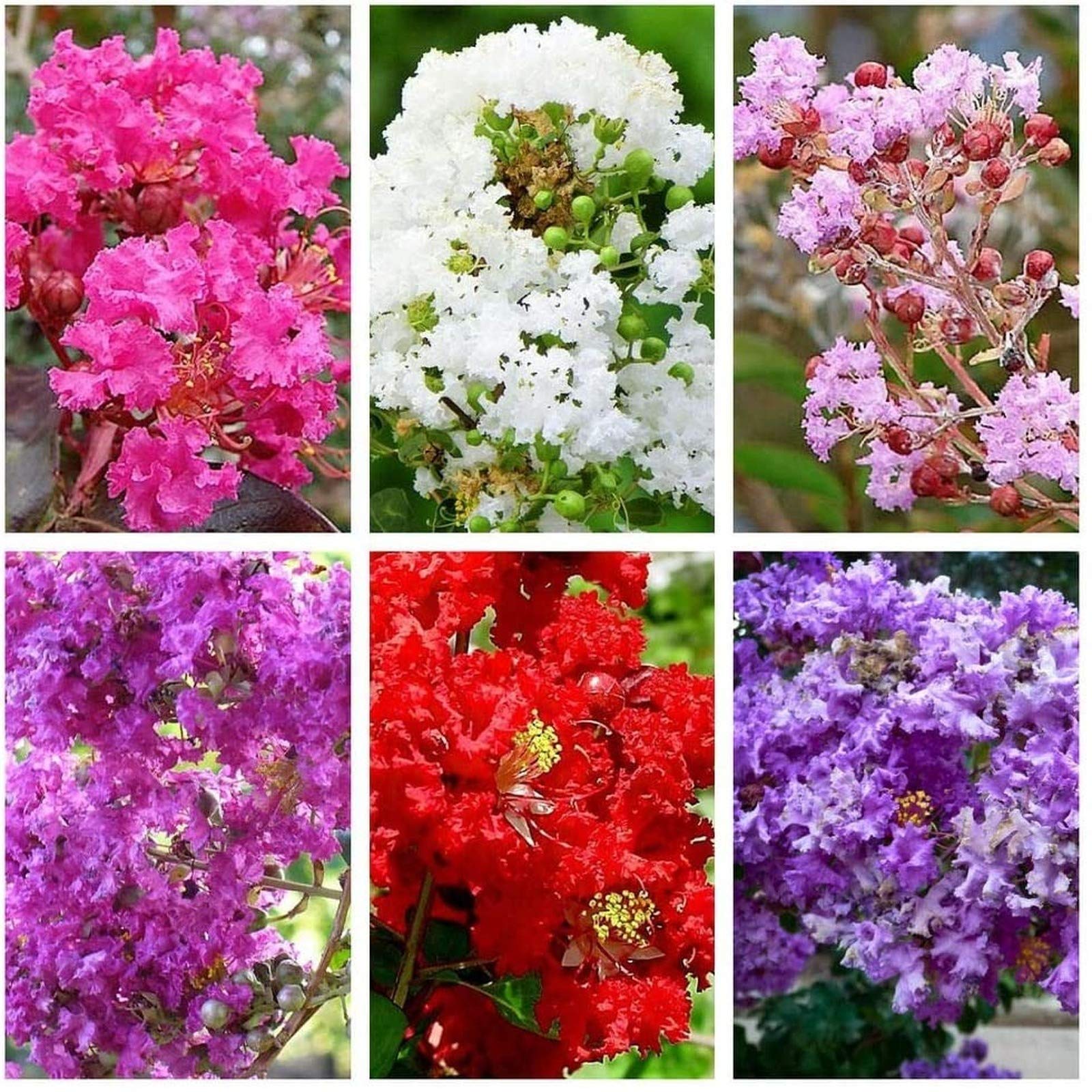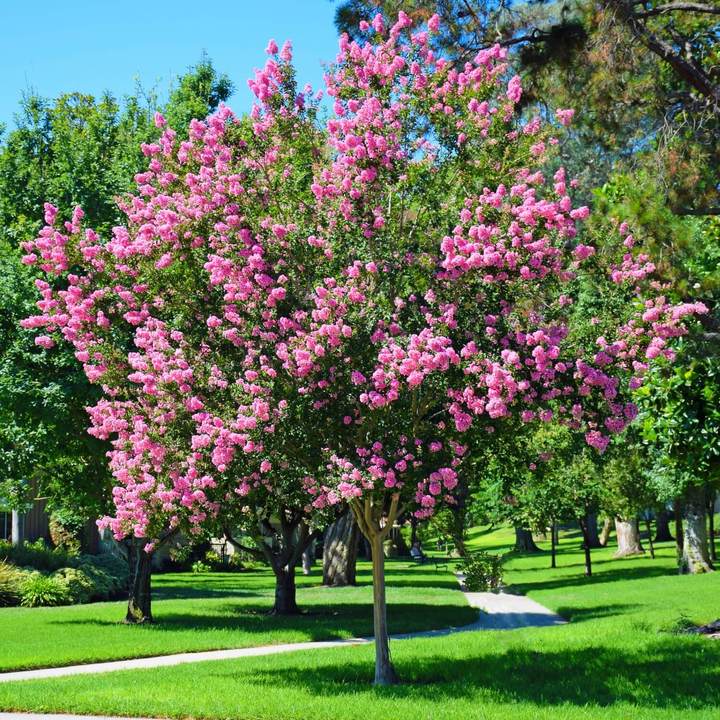Crepe Myrtle For Sale
Crepe Myrtle is a flowering tree or shrub prized for its long summer blooms, colorful bark, and graceful form. It’s often grown as an ornamental in landscapes because it offers vibrant flowers and attractive fall foliage.
These flowering plants are among the most cherished trees and shrubs in American landscapes, and at TN Nursery, we are proud to offer them in a variety of colors: white, pink, purple, and red. This plant starts growing when every other flowering tree stops blooming in July. It has a long blooming cycle, lasting up to 8 weeks.
Known for their long-lasting summer blooms, these versatile plants bring vibrant color to gardens, yards, and public spaces during the hottest months when many other plants have stopped flowering.
Their show-stopping clusters of blossoms brighten outdoor areas and attract pollinators, such as butterflies and bees, making them a beautiful and ecologically valuable choice for homeowners.
Crepe Myrtles are highly adaptable and low-maintenance
Crepe Myrtle is hardy and grows well in various soils, tolerates drought once established, and performs exceptionally well in full sun. Many gardeners choose crepe myrtles for their fast growth and ability to provide shade and ornamental appeal quickly.
Their graceful, vase-shaped form pairs beautifully with their multi-season interest. After the summer flowers fade, crepe myrtles display rich autumn foliage in shades of orange, red, and yellow, extending their beauty well into fall.
Crepe Myrtle Shrubs Have Beautiful Bark
Even in winter, their smooth, exfoliating bark adds a striking architectural element to the landscape. Crepe myrtles, which come in different sizes and growth habits, can be used as small ornamental trees, privacy borders, or stunning flowering hedges.
Exposure
Crepe Myrtle thrives in full sun
Height at Maturity
Under 25 Feet
Usage
Landscaping
Shipped As
Bare-root
Ships
UPS
Planting Zones
4-9



